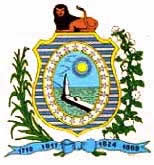|
|
History of Recife and Olinda
«Recife
«Basic Info about Recife, Olinda and Pernambuco
«Maps of Recife and Pernambuco
The first settlements in the region of Recife dates back to 1534. To guarantee the possession of the new lands, the Portuguese king divided Brazil in several strips, called capitaincies, and donated each one to rich Portuguese entrepreneurs, who would have the job to develop the colony, with their own resources, on behalf of the king.
 The Capitaincy of Pernambuco was assigned to Duarte Coelho Pereira, who, in 1534, founded the villages of Igaracu and Olinda. The capitaincy prospered, exploring first the pau-brazil (brazilwood, used to dye fabrics), then the sugar cane (white sugar was much appreciated in Europe, where sugar bet was more used). Olinda was the capital, and Recife was just a small village with a port, from which commodities were exported. Recife is the portuguese for reefs; there is a line of natural reefs all along the coast of the city.
The Capitaincy of Pernambuco was assigned to Duarte Coelho Pereira, who, in 1534, founded the villages of Igaracu and Olinda. The capitaincy prospered, exploring first the pau-brazil (brazilwood, used to dye fabrics), then the sugar cane (white sugar was much appreciated in Europe, where sugar bet was more used). Olinda was the capital, and Recife was just a small village with a port, from which commodities were exported. Recife is the portuguese for reefs; there is a line of natural reefs all along the coast of the city.
The situation changed in 1630, when the Dutch invaded Olinda. Seeing similarities between the flat lands of Recife and their home country, the Dutch preferred to settle in Recife. In 1637, Mauricio de Nassau, a much respected Dutch governor, arrived to Recife; Nassau conducted an urbanization plan, defined a layout for the streets, built several bridges, brought archictets, artists and engineers from Holland to modernize the city.
The Dutch were expelled in 1654, leaving a much (physically and intellectually) improved Recife behind. Recife kept growing, thanks to the port. The businesses generated by the port turned Recife into a major trading center (of sugar cane and slaves, mostly); the rivalry between the Portuguese trademen of Recife and the cane farmers of Olinda resulted in a war, Guerra dos Mascates (mascates was a designation of the traders), early in the 18th century.
During the 19th century, Recife consolidated the position of a regional commerce center; people from several states came to Recife to sell their products (the port was still big business) and buy stuff to resell; the culture of cotton flourished, and became an important item of exports.
Funds from commerce allowed for the starting of industrialization, early in the 1900s; in 1950, the Brazilian government created SUDENE, an agency which should foment new industrial projects in the Northeast, and Recife's economy had a new boost; today, the industrial sector (including textile, chemical, food and drink, minerals processing and others) is the most important in Recife.
Recently, the services sector is the fastest growing. Recife has the second medical park in Brazil, and is one of the most important cities in software development. Also, Recife is exploring their touristic potential: a well established structure of hotels and restaurants, a rich cultural and historic heritage, all framed by some of the nicest beaches in Brazil, keep attracting more and more tourists from Brazil and from all over the world.
Read also this
Encyclopedia entry about the History of Recife
| |
 The Capitaincy of Pernambuco was assigned to Duarte Coelho Pereira, who, in 1534, founded the villages of Igaracu and Olinda. The capitaincy prospered, exploring first the pau-brazil (brazilwood, used to dye fabrics), then the sugar cane (white sugar was much appreciated in Europe, where sugar bet was more used). Olinda was the capital, and Recife was just a small village with a port, from which commodities were exported. Recife is the portuguese for reefs; there is a line of natural reefs all along the coast of the city.
The Capitaincy of Pernambuco was assigned to Duarte Coelho Pereira, who, in 1534, founded the villages of Igaracu and Olinda. The capitaincy prospered, exploring first the pau-brazil (brazilwood, used to dye fabrics), then the sugar cane (white sugar was much appreciated in Europe, where sugar bet was more used). Olinda was the capital, and Recife was just a small village with a port, from which commodities were exported. Recife is the portuguese for reefs; there is a line of natural reefs all along the coast of the city.